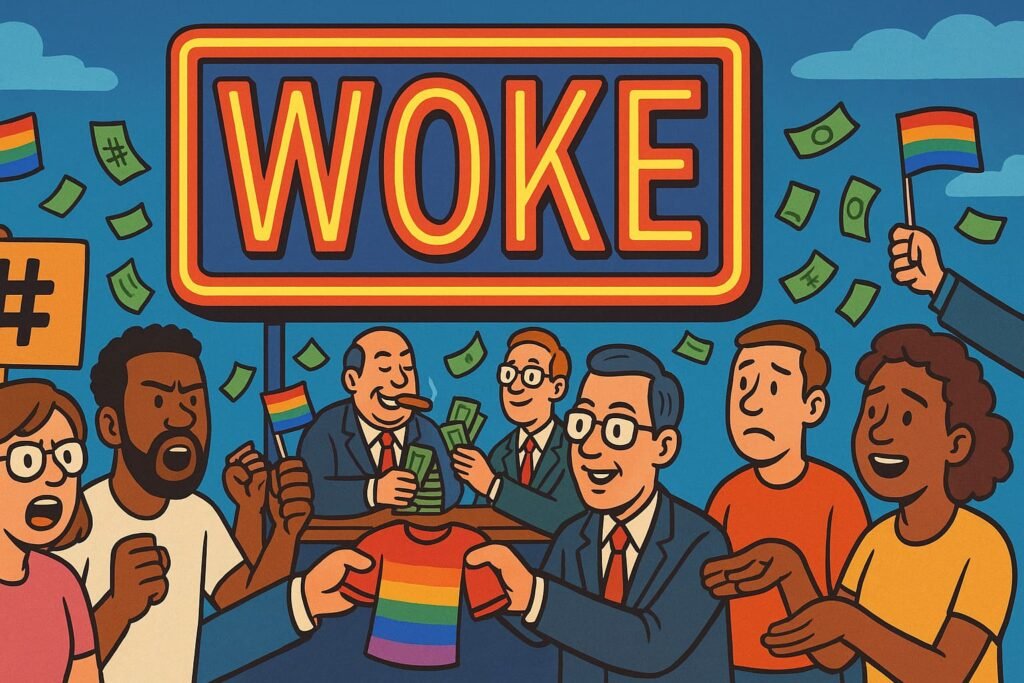What Is Woke? The Cult of Virtue Explained
“Woke” started as a call to stay alert to injustice. Today, it’s less about awareness and more about performance — a cultural label that mixes activism, branding, and moral superiority.
At its core, woke isn’t a movement. It’s a performance that powers an entire system of wokeism (the ideology) and fuels woke culture (the environment it creates in institutions and everyday life).
Table of contents
The Origins: From Awareness to Branding
- Civil rights era: “Stay woke” meant don’t get fooled by the system.
- Academia: Critical Theory scholars expanded it into endless categories of oppression.
- Activism: Hashtags and protests turned it into a lifestyle.
- Business: Corporations discovered woke sells better than paying fair wages.
- Politics: Legislators realised feelings could be written into law.
What began as vigilance mutated into an industry.
What it Really Means Today
In plain terms, woke is:
- Identity politics over universal rights.
- Feelings over facts.
- Virtue-signalling over solutions.
- Moral outrage as currency.
- Performative activism instead of real change.
It’s the show, not the substance.
Wokeness as Performance
Modern wokeness is about looking righteous, not fixing problems.
- Hashtag Activism: Retweets and slogans instead of action.
- Corporate Virtue: Rainbow logos in June, sweatshops in July.
- Status Games: The right buzzwords = instant moral superiority.
The point isn’t to help — it’s to be seen performing help.
👉 That’s why woke is best understood as the behaviour layer — the performance sitting on top of deeper wokeism.
The Pipeline of Woke
- Academia → jargon factories.
- Activism → slogans on the street.
- Business → HR and marketing cash in.
- Politics → laws shaped by feelings.
- Everyday life → lectures about pronouns while your bills climb.
This is woke culture: the operating system that now runs universities, corporations, and media.
Why it Took Off
- Profitable: whole industries (DEI, ESG, consultants) thrive on it.
- Safe rebellion: rant online, shop Amazon after.
- Elite-friendly: distracts from taxes, wages, corruption.
- Addictive: outrage is easy, solutions are hard.
The Irony
Wokepolitics claims to be radical. In reality, it props up the status quo. It buries class, economics, and power under endless identity debates.
It’s not revolution. It’s governance by hashtag.
So, in sum
- The performance of virtue, endlessly policed through identity.
- The entry point to wokeism (the ideology) and wokeculture (the institutional environment).
- A distraction machine that keeps the public arguing about pronouns while elites cash in.
It started as awareness. Now it’s an industry of outrage.
Related Explainers:
- What Is Woke? (here) — The Behaviour.
- What Is Wokeism? — The “Ideology” or the “doctrine”.
- Woke Culture Explained — Universities, Workplaces, Media, or Corporate Branding.
FAQ
What does “woke” mean today?
A performance of virtue through identity politics, slogans, and branding.
How is woke different from wokeism?
Woke is the behaviour. Wokeism is the ideology behind it.
What about woke culture?
That’s the environment created when woke ideas capture universities, corporations, media, and politics. See WokeCulture Explained.
Why is woke harmful?
It silences debate, divides people, and distracts from real problems like wages, housing, and corruption.
Can woke be positive?
The original awareness, yes. The modern performance? Not so much.



